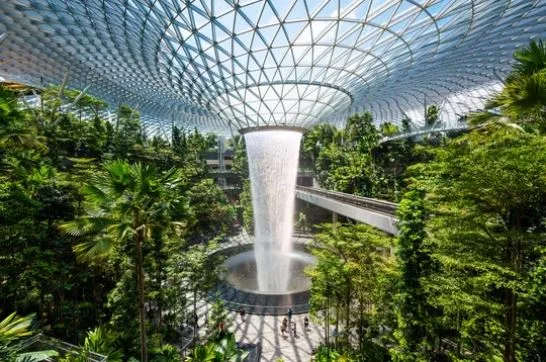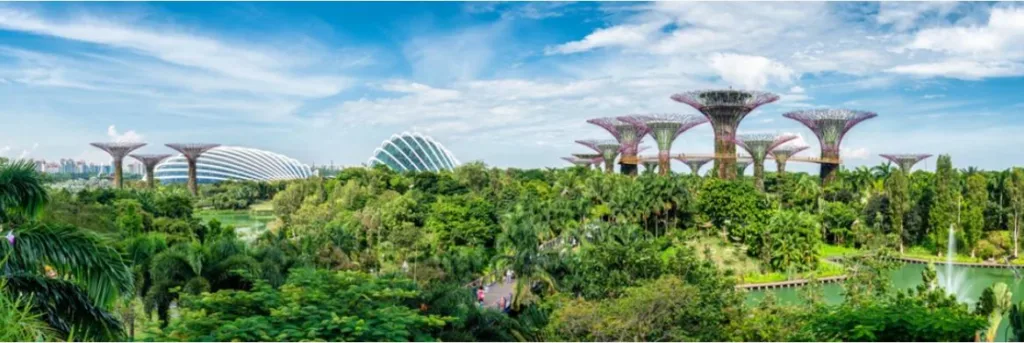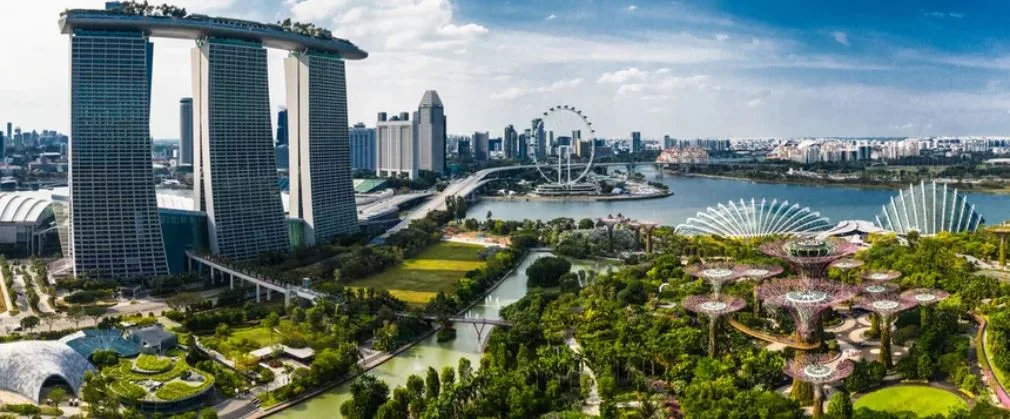Outdoor Connectivity in Architecture
As humans, we have a subliminal desire to commune with nature. In 1984, American biologist Edward O Wilson published his book ‘Biophilia’, exploring the concept that people have an innate bond with other living systems.

Many research papers have found that a connection to nature can help lower blood pressure, reduce stress, improve attentiveness, boost creativity, and make us generally happier. These benefits are why outdoor connectivity in architecture is essential in the projects we deliver.
At Axis, we are keen to implement Biophilic Design as an effective way of planning/designing interiors to stimulate the innate biophilia of a building’s residents. We aim to bring nature into the interior scheme of commercial projects without a garden to connect to. We achieve this by using preserved moss, live walls and hanging plants.
Outdoor Connectivity in Architecture:
Understanding the site is one of the first things on our list when we start a new project. We want to understand the plot’s potential and how our design can improve it. The garden’s orientation is the first consideration for correctly designing the architecture and the landscape. The access to the property and the location of the adjacent road will influence the decision as to which are the best visual spots and which are quiet places.
Seeing the Outside:
The size of the opening is critical in creating a visual link to the garden. However, that must be balanced with the current legislation, as the external glazed areas cannot exceed that which is permitted. That said, there are ways to achieve spectacular views into the garden and still meet the requirements, such as improving the thermal fabric of the building or selecting triple glazing with good thermal performance.
Bringing the Outside In:
We design buildings and spaces for the UK climate as a Hampshire-based architectural practice.
Outdoor spaces can never be functional all year round because of climate restrictions. That is why we believe that for proper outdoor connectivity in architecture, it is vital to bring the outside in. There are many creative ways to achieve this. Using similar materials for inside and outside can have powerful results in linking the inside with the outside. Flooring is also one of our best ‘weapons’ to connect the two spaces as it is reasonably easy to specify the same (or similar) materials suitable for each space.
Green walls, featured glazed viewpoints into the garden, the use of natural materials, water features and decorative indoor plants can also help with this connection.

We always need to find a balance between aesthetics and functionality. Budget will often dictate the design decisions, together with site constraints. For example, we must design a green wall near drainage connections to irrigate the plants automatically and avoid multiple plant fatalities! Also, green walls can be very costly, as the quantity of plants is quite significant. Therefore, we can only incorporate these in a project with a generous budget.
Outdoor Connectivity in Architecture in the Urban Environment:

There’s a common misconception that outdoor connectivity in architecture is impossible to achieve in an urban environment. This is not the case. Singapore is a city famous for green buildings, sustainable architecture and incorporating nature within the architecture of skyscrapers and multi-storey buildings. When Singapore gained independence in 1965, the vision was to create a proper garden city. Its approach goes beyond the individual addition of green elements of buildings – Singapore is designed as a green infrastructure and city, so wherever you visit, the presence of nature is strong. We recommend visiting if you want to see some outstanding examples of green architecture.
Commercial projects are increasingly aware of the need to bring nature into the design to improve the well-being of its users. Inevitably, all cities will take a similar approach to Singapore in the future. Green buildings will become the new norm, and legislation will eventually include provisions for these, focusing on sustainability and well-being.
If you are looking for help with a design project and realise the importance of outdoor connectivity, talk to us about how we can help you achieve this. We’re based in Hampshire but work with residential and commercial clients across the South of England and further afield.

